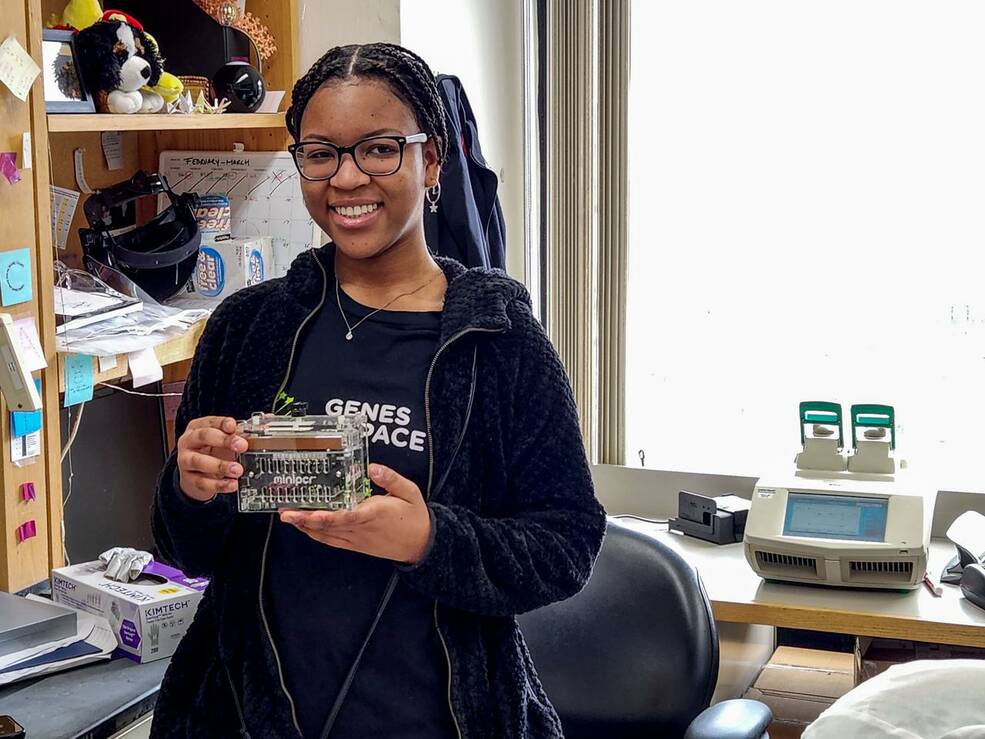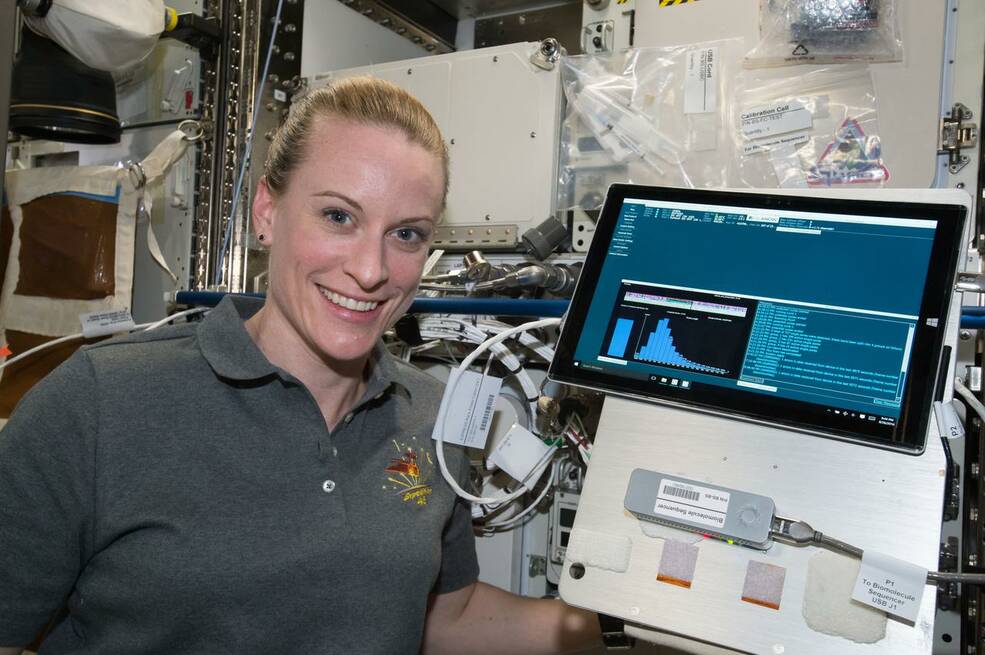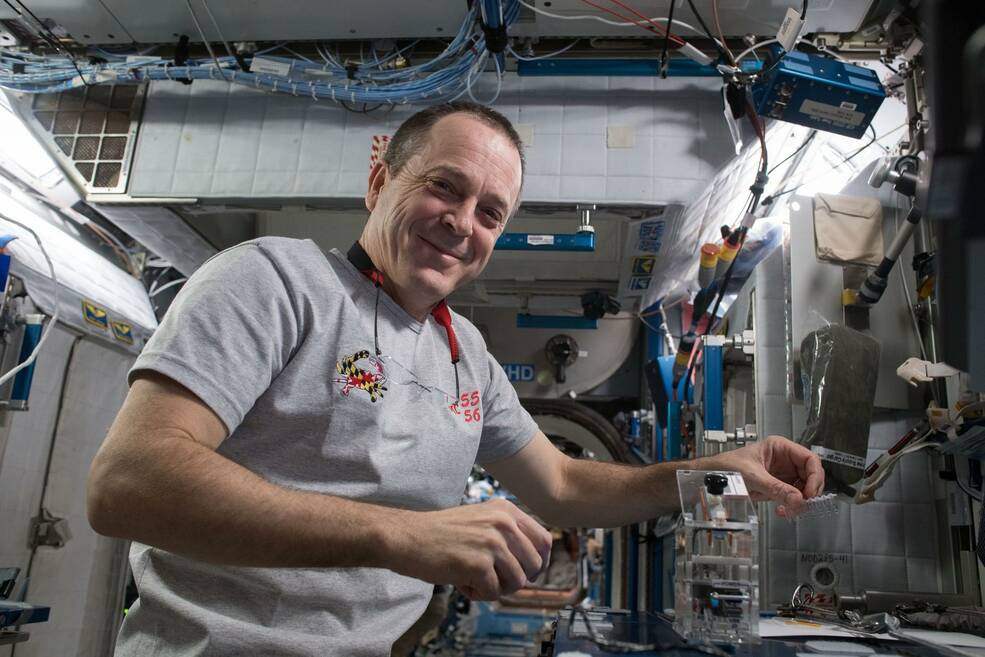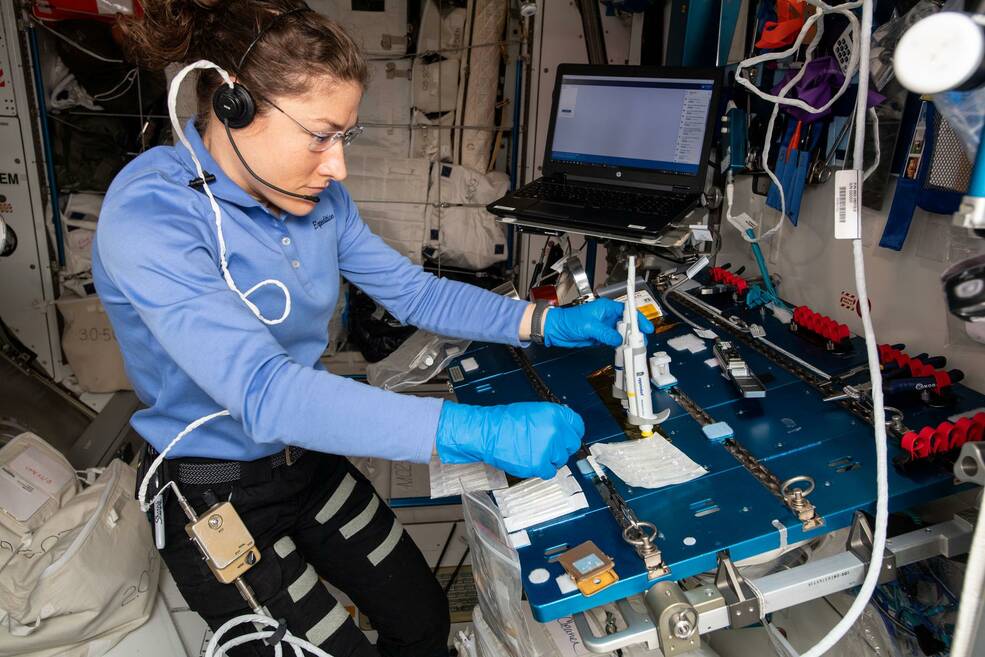Crew members aboard the International Space Station conducted a variety of scientific investigations during the week of July 17, 2023, including setting up the Genes in Space-10 experiment.
Genes in Space is a national contest for students in grades 7 through 12 to design DNA analysis experiments aboard the space station. It is a collaboration between Boeing and miniPCR bio sponsored by the ISS National Lab and New England Biolabs. Genes in Space-10 validates a method for measuring and analyzing the length of DNA fragments known as telomeres using fluorescence.
Telomeres are cap-like genetic structures at the end of chromosomes that protect them from damage. They shorten with age but have been found to lengthen in space, an effect noticed through NASA’s Twins Study following Mark Kelly’s year-long mission in space in 2015 and verified by subsequent research. Analyzing telomere length could help determine the mechanism behind this effect. Results from the investigation also could provide a way to measure DNA and to diagnose genetic-based medical problems during spaceflight. Currently, DNA samples are sent back to Earth for analysis, but this can cause the samples to degrade and is not feasible for future long-duration missions. Insight into why telomeres lengthen in space could lead to a better understanding of their role in human aging as well.
Significant advances in the procedures and tools available on the space station have made this study and related DNA research possible. ESA (European Space Agency) astronaut Tim Peake first amplified DNA (an important step in the process of analyzing genetic material) in April 2016. In August 2016, NASA astronaut Kate Rubin sequenced DNA in space for the first time and in August 2017, NASA astronaut Peggy Whitson used sequencing to identify the first unknown microbe from the station. The process she validated has potential for the in-flight identification of microbes and diagnosis of infectious diseases on future missions. In August 2018, NASA astronaut Ricky Arnold first used a “swab to sequencer” DNA sequencing method that eliminates the need to culture bacteria before analysis.
Other studies that have taken advantage of these advances include Genes in Space-5, which took the first step toward a rapid, safe, and cost-effective way to examine the immune system during spaceflight. Genes in Space-5 also provided proof of concept of simultaneously amplifying multiple DNA sequences in space, expanding the possibilities for in-flight research and health monitoring.
Another milestone, reached in May 2019, was the first CRISPR-Cas9 gene editing on station, performed by NASA astronaut Christina Koch. Genes in Space-6 put this genome editing technique to use to successfully generate breaks in the DNA of a common yeast, direct a method to repair the breaks, and sequence the patched-up DNA to determine whether its original order was restored. Performing this entire process in space allows researchers to isolate the effects of spaceflight conditions on the process. The team published details on this milestone.
The ability to analyze DNA, study how it is damaged and repaired in space, and to identify unknown organisms and changes in known ones is key to future space exploration. Investigations from the Genes in Space program are providing important advances in space-based genetic research.
John Love, ISS Research Planning Integration Scientist
Expedition 69




































